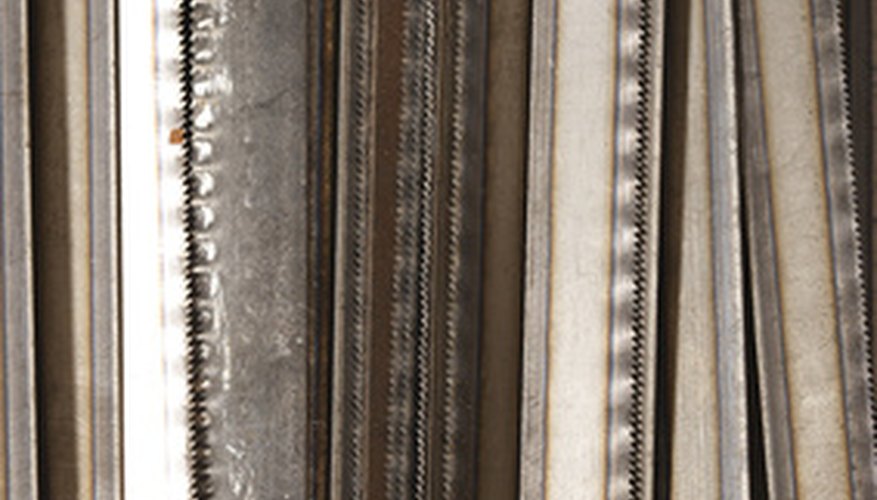A band saw is a very useful woodworking machine. It can cuts thick lumber in a matter of minutes, as opposed to hours by hand cutting. Furthermore, because its blade is thin, it can cut complex curves. Because it is a machine, safety should be a serious concern. By running through a safety inspection checklist before operation, you can be assured that the saw will run and cut properly.
Blade Inspection
Before running the saw, make sure the blade is sharp. A sharp blade will cut the wood, instead of tearing it. If it's dull, sharpen or replace it. Other things to look for are broken, missing, or bent teeth. If any of these conditions are found, the blade should be replaced.
- Before running the saw, make sure the blade is sharp.
Wheel Inspection
Inspect the large lower and upper saw guide wheels. Look for signs of bending, blade scoring, or large nicks. Look at the bearings, for signs of burning. After a static visual inspection, run the wheels without the blade on, and look at the running wheels for signs of being bent. If any of these conditions are found, the wheels should be replaced.
- Inspect the large lower and upper saw guide wheels.
- After a static visual inspection, run the wheels without the blade on, and look at the running wheels for signs of being bent.
Blade Guide Rollers
Look at the blade guide rollers. Look for signs of scoring, or a bluish tinge on the steel, indicating burning. With the saw unplugged, physically move the rollers back and forth, to make sure they are running free and not binding. If any deficiencies are found, they should be replaced.
- Look at the blade guide rollers.
- With the saw unplugged, physically move the rollers back and forth, to make sure they are running free and not binding.
Guards
The Occupational and Health Safety Administration (OSHA) recommends inspecting all guards on the band saw. Things to look for are guards that are chafed by the blade or drive belt, and any signs of burning or scoring. Another thing to look for is latches that stay shut, so that the guard will not fly open during saw operation. If any deficiencies are found, the guarding should be repaired or replaced prior to saw usage.
- The Occupational and Health Safety Administration (OSHA) recommends inspecting all guards on the band saw.
- Things to look for are guards that are chafed by the blade or drive belt, and any signs of burning or scoring.
